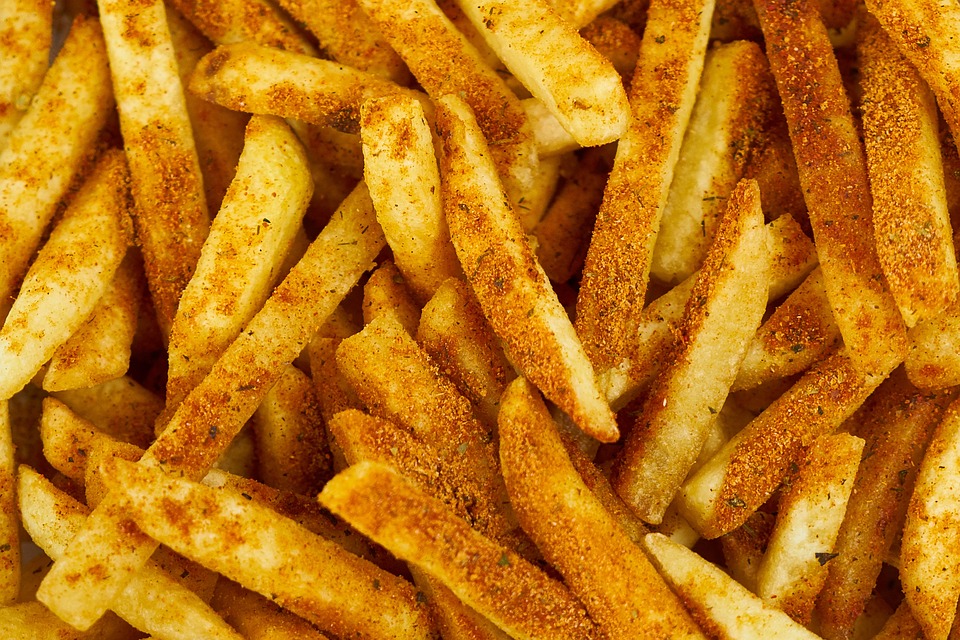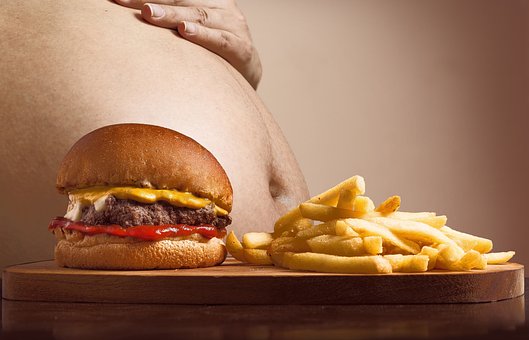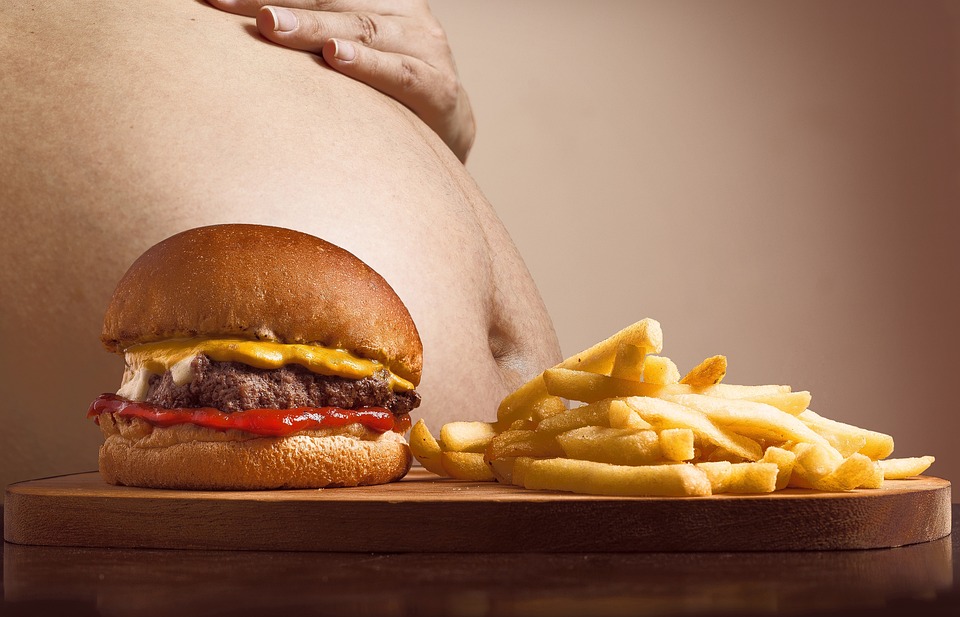
A major medical topic that has been discussed in 2020 is the increasing amount of individuals, both young and mature, who suffer from obesity in America. It’s easy to assume the “obesity epidemic” is being exaggerated given how much we have heard about it. It may not seem as if gaining a few extra pounds is serious enough to be announced as a national crisis.
Despite not being as destructive as the Black Death, obesity is a considerable health emergency. Specialists concur that if the rate of overweight kids that transition into overweight adults increases, the associated illnesses like heart disorder, cancer, especially diabetes will increase drastically. That will mean a lot of sick people.
Marion Nestle, Ph.D., MPH, who is in charge of the department of nutrition and food studies at New York University, has foreseen that the costs of certain ailments may be vastly expensive.
James O. Hill, Ph.D., agrees. Dr. Hill from the Center for Human Nutrition at University of Colorado Health Sciences Center declares that if our current rate of obesity-connected diabetes continues, it will be too costly for our medical system to handle.
One has to ponder how the issue of obesity became so widespread and severe enough to become a crisis. And more importantly, how do we stop it?
The Causes
So what’s causing the epidemic? It is widely accepted that weight gain can be attributed to two things: overeating and lack of physical activity. The differences are in the specifics.
Hill states that though people may refer to genetics as a cause of obesity, genes cannot ultimately be blamed for it. While a person may have a genetic inclination towards a specific physique, the pattern that each successive generation is heavier than the preceding one demonstrates that environmental modifications are having a major effect.
Hill postulates that a lack of physical activity could be the cause, citing that due to changes in lifestyles and occupations, people don’t exercise as much as their predecessors did.
Nestle believes that exercise is important, but she puts more importance on diet. Nestle claims in her book, Food Politics: How the Food Industry Influences Nutrition and Health, that the advice about proper nutrition is overshadowed by billions of dollars’ worth of advertising for unhealthy food that we are exposed to both in our homes and in school settings. As food companies and chains attempt to outdo each other by offering bigger helpings of food, our waistlines grow in accordance.
The Numbers
Although there has been considerable interest proposed concerning obesity by health professionals, academics, and the press, there has been no definitive success in overcoming this issue. Based on the majority of specialists’ opinions, it seems almost inevitable that obesity will become worse before it improves.
Cynthia Ogden, with a Doctor of Philosophy degree, who is an epidemiologist working with the Centers of Disease Control and Prevention, emphasized the consequences of her and other specialists’ exploration into the observed weight of people in the United States. The study showed that nearly one-third of all adults are considered obese and nearly one-sixth of children and adolescents from 6 to 19 years old are overweight. The amount of obese individuals has been rising continually over the past several decades. Ogden emphasizes that obesity is an issue that affects all demographics, but it is most serious among particular ethnicities. Approximately half of all African-American females do not have Hispanic ancestry and are considered overweight.
Did Ogden have any optimism about what was revealed by the survey concerning obesity in America? “I didn’t see any hopeful signs,” she says.
Current Dietary Intake
The food Americans are eating has led to the obesity epidemic. A high number of children and adults consume more calories than their body requires each day, and the amount of physical activity they get is too low to account for the extra calories they take in. Combining certain factors leads to an increased chance of gaining weight. Data from a national survey indicates that the typical caloric intake of females aged 19 years and above is estimated to be 1,785 calories per day, while the same statistic for males is 2,640 calories each day. The totals given don’t seem to be excessive, but they are tricky to understand properly due to survey participants, particularly those who are overweight or obese, not giving accurate numbers of how much they are eating. Research suggests that the amount of calories consumed may be greater than what is predicted.
Calorie Balance: Food and Beverage Intake
Regulating the amount of calories you get from food and drinks is key to maintaining a balance of calories. It is essential to be mindful of the number of calories one needs, where they can get them from, as well as the connections between certain foods and drinks and one’s body weight. This will help in constructing a dietary routine that can help control caloric intake and maintain a healthy weight. A lot of people in the United States do not know the amount of calories they should consume every day or the calorie count of various foods and drinks.
Understanding Calorie Needs
A person’s daily requirement for calories varies based on age, gender, height, weight, and amount of physical activity. Furthermore, one’s aim to shed, maintain or increase weight is significant in determining the amount of calories to be consumed. It is estimated that adult women require between 1,600 and 2,400 calories per day, while adult men need between 2,000 and 3,000 calories daily, depending on age and activity level. The bottom of the scale applies to those who do not exercise often and the top is for the ones who do exercise regularly within each age group or gender. The resting metabolic rate of adults generally falls as they get older, meaning that their daily calorie requirement goes down. It is estimated that younger children will require about 1,000 to 2,000 calories per day, and for older kids and teens the amount required can go up to 3,200 calories, with boys typically needing more than girls. The figures here are just guesstimates, and to come up with the exact quantity of calories one needs, resources such as the ones present on MyPyramid.gov can be employed.
Understanding the amount of calories required on a daily basis can be a beneficial measurement to work out if someone is eating the correct number of calories in accordance to the amount that is needed each day. In order to determine if they are taking in the right amount of calories, people should keep tabs on their weight and modify their calorie consumption and physical activity accordingly, depending on their bodyweight changes. Adults typically try to reduce their daily caloric intake by at least 500 calories in order to shed excess weight. Keeping a smaller difference in calorie intake can make a big change on somebody’s weight in the long run. Weight loss due to a calorie deficiency will be the same regardless of what causes it – whether it is through reducing calorie intake, boosting physical activity, or a combination of the two. In research, the majority of the calorie deficit is commonly caused by reduced calorie intake, with only a slight portion being increased by physical activity.
Carbohydrates, Protein, Fat, And Alcohol
The primary sources of energy in the diet are carbohydrates, protein, and fat. Almost all items of food and drink contain different proportions of the three macro nutrients. Alcohol also is a source of calories.
Most citizens of the United States predominantly use carbohydrates as their main source of energy, with each gram containing four calories. Carbohydrates can be broken down into two categories: simple carbs like sugars, and complex carbs like starches and fibers. Certain sugars occur naturally in food items (e.g. the lactose found in milk and fructose found in fruit), while others are included in food items (i.e. the sugar put into coffee and the high fructose corn syrup added to sugary drinks). Likewise, dietary fiber can be found naturally in certain foods (such as legumes and cereals) or it can be added to meals. A large part of a person’s diet is composed of starches, which can be found in foods like grains, potatoes, and various other starchy vegetables. A frequent ingredient in American cuisine that provides starch is processed grains. Starches can be used to make foods thicker or make them more stable. Excess sugar and starch generally give calories yet barely any essential vitamins or minerals. Most individuals have a sufficient amount of overall carbohydrates in their diet, however there is often too much of a reliance on added sugar, grains that have been processed, and inadequate amounts of fiber.
Protein also provides 4 calories per gram. As well as supplying energy, protein provides amino acids which help to build up and keep body tissues and muscles. There is an assortment of foods, both animal and plant, that contain protein. Meats obtained from animals, such as seafood, various kinds of poultry, eggs, and milk products, all form the basis of a dietary protein source. Legumes, including beans and peas, nuts, seeds, and soy-based items contain protein. Inadequate protein intake in the United States is rare.
Fats are the densest calorie source, containing 9 calories in a single gram. There are four kinds of fat: saturated, trans, monounsaturated, and polyunsaturated fatty acids. Foods may consist of some natural fat and can have fat added to them during the cooking process. Insufficient consumption of fatty substances is not a widespread problem in the United States, similarly to an insufficient amount of protein. The majority of people in the United States take in too much of the fat that is saturated and trans, and not enough of the unsaturated kind.
Alcohol has a caloric value of seven calories for every gram, and the quantity of calories present in an alcoholic drink fluctuates considerably based upon which beverage is being consumed. Alcoholic drinks contain calories but have few nutritional benefits. Drinking alcohol is one of the major sources of calories for a lot of grown-ups in the United States.
Does macronutrient proportion make a difference in body weight?
The Institute of Medicine has designated amounts for the proportion of calories in one’s diet that needs to come from carbs, protein, and fat. The AMDR are beneficial because they consider both the lowering of risk for serious health conditions and the consumption of essential nutrients.
Americans should make sure that they are getting the right amount of calories and staying within the acceptable macronutrient distribution range in order to control their weight. Ample proof shows that there is no perfect ratio of macronutrients that can help with weight loss or keeping weight off. It does not matter the percentage of macronutrients one is consuming, but rather the overall amount of food intake and an individual’s ability to maintain a calorie-reduced diet throughout an extended period of time. This has been demonstrated to be effective in achieving weight loss and preventing weight gain after the loss. The amount of calories that are taken in is the most important dietary element when it comes to body weight. There is moderate evidence that weight loss and weight maintenance are not any more successful in adults when their diets consist of less than 45% or more than 35% of their total caloric intake coming from carbs or protein, respectively, than when eating other calorie-controlled diets. Individuals who are looking to slim down or keep the weight they have lost can pick dietary habits that ensure they are taking in the right number of calories and have macronutrient amounts that adhere to the Dietary Reference Intakes’ suggested AMDR ranges.
Individual Foods and Beverages and Body Weight
The main aim of calorie balance should be the overall amount of calories consumed, yet there have been reports linking over- and under-consumption of particular items to a person’s weight. Research has shown that there is not a significant difference on someone’s body weight if they maintain their total calorie intake but change up their food and drinks. In spite of its ultimate effect on calorie balance, some foodstuffs and drinks can be highly indulgent, leading to an overall higher calorie intake. It is essential to pay attention to what kind of food you are consuming, as everyone has different eating habits. The most sensible thing to do is to switch sugary, high-calorie food with healthier options with lower calorie content. The following guidance may help individuals control their total calorie intake and manage body weight:
- Increase intake of whole grains, vegetables, and fruits: Moderate evidence shows that adults who eat more whole grains, particularly those higher in dietary fiber, have a lower body weight compared to adults who eat fewer whole grains. Moderate evidence in adults and limited evidence in children and adolescents suggests that increased intake of vegetables and/or fruits may protect against weight gain.
- Reduce intake of sugar-sweetened beverages: This can be accomplished by drinking fewer sugar-sweetened beverages and/or consuming smaller portions. Strong evidence shows that children and adolescents who consume more sugar-sweetened beverages have higher body weight compared to those who drink less, and moderate evidence also supports this relationship in adults. Sugar-sweetened beverages provide excess calories and few essential nutrients to the diet and should only be consumed when nutrient needs have been met and without exceeding daily calorie limits.
- Monitor intake of 100% fruit juice for children and adolescents, especially those who are overweight or obese: For most children and adolescents, intake of 100% fruit juice is not associated with body weight. However, limited evidence suggests that increased intake of 100% juice has been associated with higher body weight in children and adolescents who are overweight or obese.
- Monitor calorie intake from alcoholic beverages for adults: Moderate evidence suggests that moderate drinking of alcoholic beverages is not associated with weight gain. However, heavier than moderate consumption of alcohol over time is associated with weight gain. Because alcohol is often consumed in mixtures with other beverages, the calorie content of accompanying mixers should be considered when calculating the calorie content of alcoholic beverages. Reducing alcohol intake is a strategy that can be used by adults to consume fewer calories.
Studies have demonstrated that neither adults nor children and adolescents will experience weight management benefits from consuming milk and dairy products consistently. Evidence in adults shows this to be true strongly, while evidence in children and adolescents moderately supports the same conclusion. The data shows that there is no direct relation between eating meat and poultry, or beans and peas (including soy) and body weight. Although not impacting body weight directly, these types of foods are essential to include as part of a nutritious diet.














